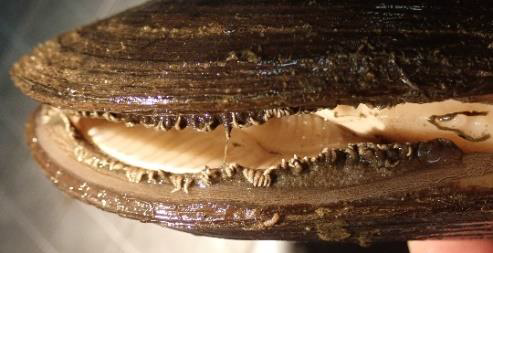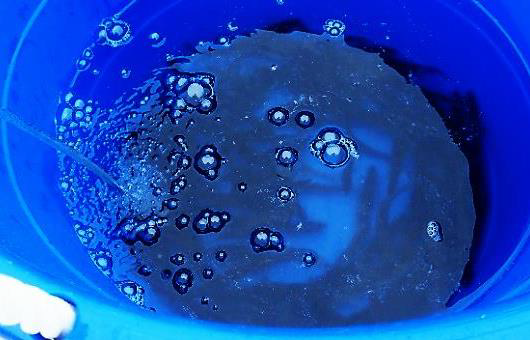

In 2019 GNFH biologists experimented with two ponds to see whether there was a difference in freshwater mussel survival from drop-off to about 6 months old in ponds that were fertilized with organic vs inorganic materials. Various water quality measures were made daily or weekly throughout the growing season, including algae (mussel food) levels in each pond, to track the effectiveness of each fertilization type. Both methods were successful, and the two ponds combined produced over 35,000 Fat Mucket (Lampsilis siliquoidea) mussels. This experiment is continuing in the 2020 season, and expanding to include two different mussel species, Black Sandshell (Ligumia recta), which use Walleye as a host, and Plain Pocketbook (Lampsilis cardium), which use Largemouth bass as a host.
In late May, hatchery biologists collected mussel larvae, called glochidia, from gravid mussels (Photo 1, gill filled with glochidia), allowed the glochidia to attach to the gills of their Walleye fish hosts in a bath exposure (Photo 2). When the mussels fully metamorphose from larvae into juveniles, they’ll drop off the fish’s gills and (hopefully!) fall into the sand in the bottom of the cage. These little mussels will start filter feeding and growing, and – later in the fall—we’ll carefully take the cage out of the pond, sift through the sand, and count and measure the juvenile mussels that were produced, comparing the outcomes between the two ponds.
Improving our ability to manage ponds for both fish and mussel production concurrently– and culture sand grain sized juvenile mussels past this first, sensitive life stage in hatchery ponds instead of in often unpredictable Mississippi River conditions—will help to make future mussel production more effective and reliable.
By: Beth Glidewell
